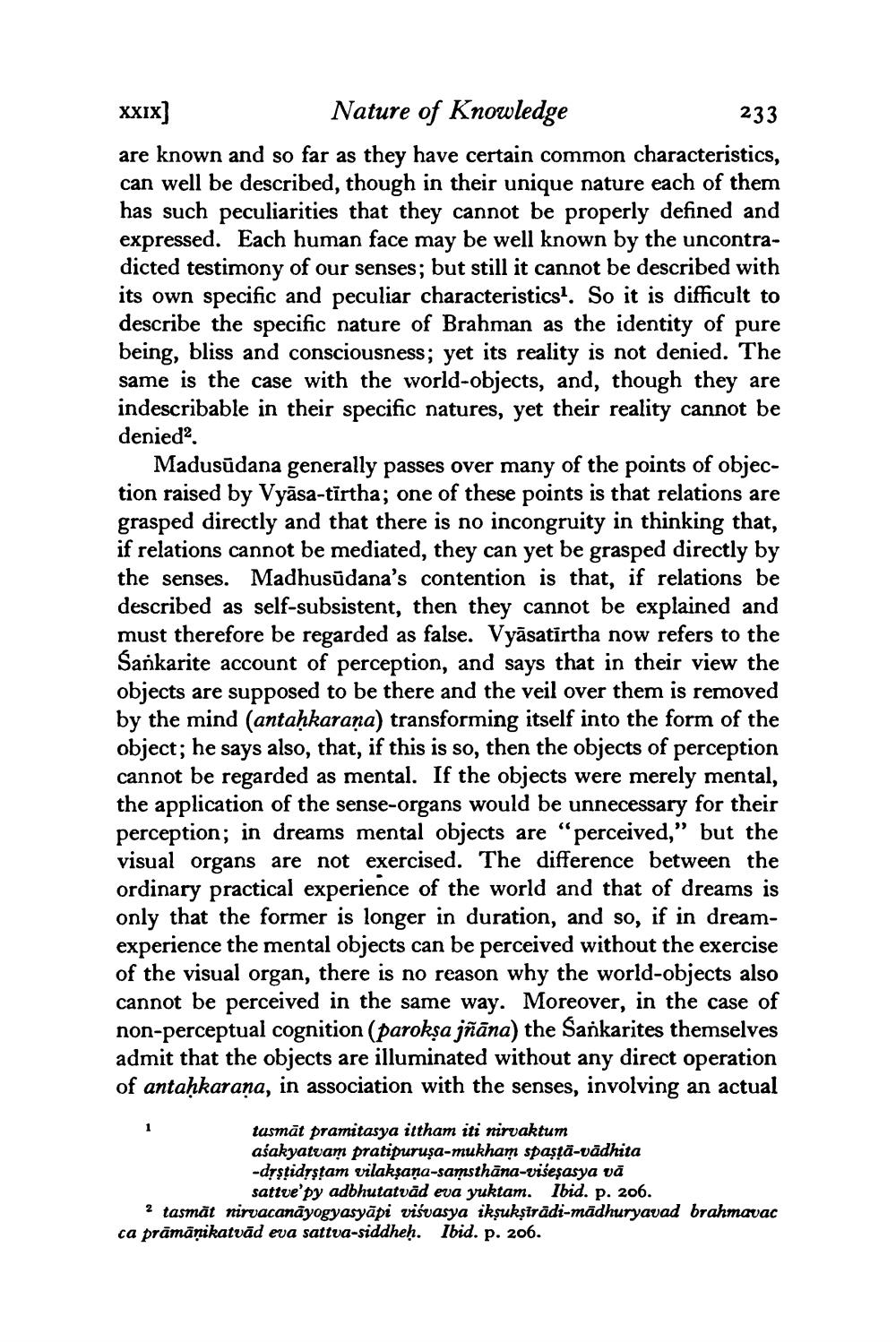________________
XXIX) Nature of Knowledge
233 are known and so far as they have certain common characteristics, can well be described, though in their unique nature each of them has such peculiarities that they cannot be properly defined and expressed. Each human face may be well known by the uncontradicted testimony of our senses; but still it cannot be described with its own specific and peculiar characteristics. So it is difficult to describe the specific nature of Brahman as the identity of pure being, bliss and consciousness; yet its reality is not denied. The same is the case with the world-objects, and, though they are indescribable in their specific natures, yet their reality cannot be denied.
Madusūdana generally passes over many of the points of objection raised by Vyāsa-tirtha; one of these points is that relations are grasped directly and that there is no incongruity in thinking that, if relations cannot be mediated, they can yet be grasped directly by the senses. Madhusudana's contention is that, if relations be described as self-subsistent, then they cannot be explained and must therefore be regarded as false. Vyāsatirtha now refers to the Sankarite account of perception, and says that in their view the objects are supposed to be there and the veil over them is removed by the mind (antaḥkaraña) transforming itself into the form of the object; he says also, that, if this is so, then the objects of perception cannot be regarded as mental. If the objects were merely mental, the application of the sense-organs would be unnecessary for their perception; in dreams mental objects are "perceived," but the visual organs are not exercised. The difference between the ordinary practical experience of the world and that of dreams is only that the former is longer in duration, and so, if in dreamexperience the mental objects can be perceived without the exercise of the visual organ, there is no reason why the world-objects also cannot be perceived in the same way. Moreover, in the case of non-perceptual cognition (paroksa jñāna) the Sankarites themselves admit that the objects are illuminated without any direct operation of antahkarana, in association with the senses, involving an actual
tasmāt pramitasya ittham iti nirvaktum asakyatuam pratipuruşa-mukham spaştä-vādhita -drstidrstam vilaksana-samsthāna-višeşasya vā
sattue'py adbhutatvād eva yuktam. Ibid. p. 206. 2 tasmăt nirvacanãyogyasyāpi visvasya ikşuksīrādi-mādhuryavad brahmavac ca prāmānikatvād eva sattva-siddheḥ. Ibid. p. 206.




